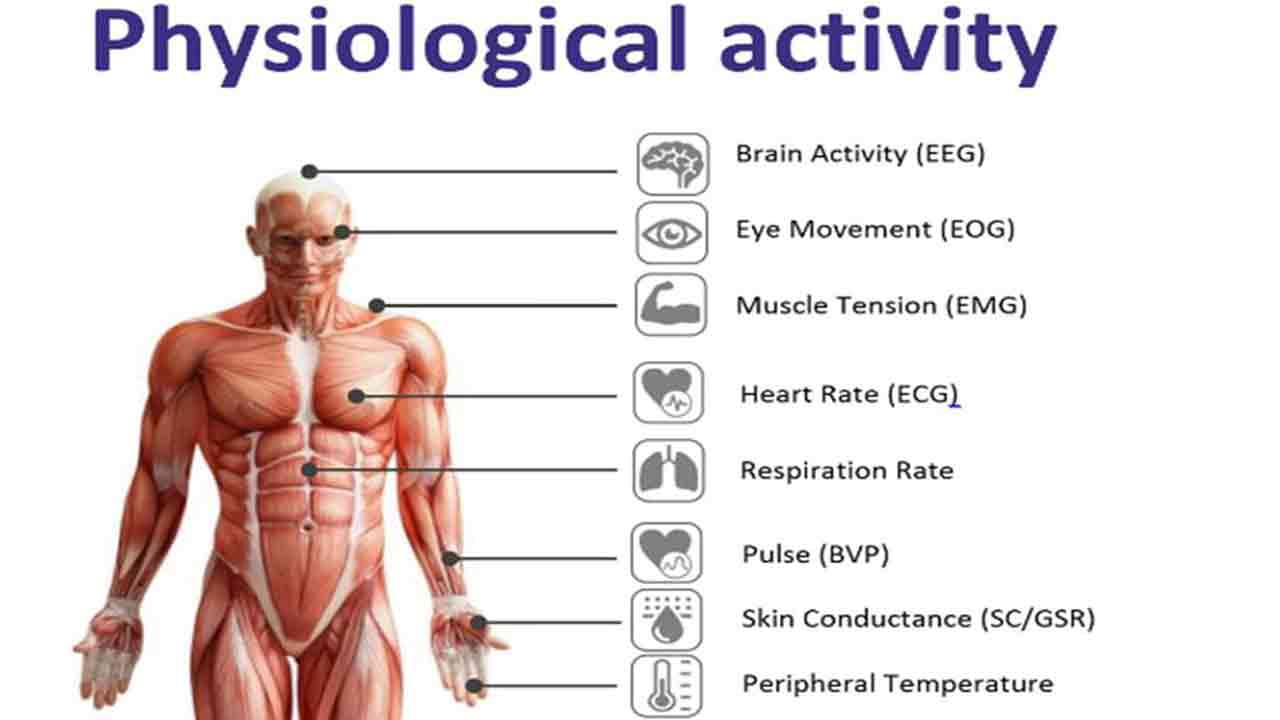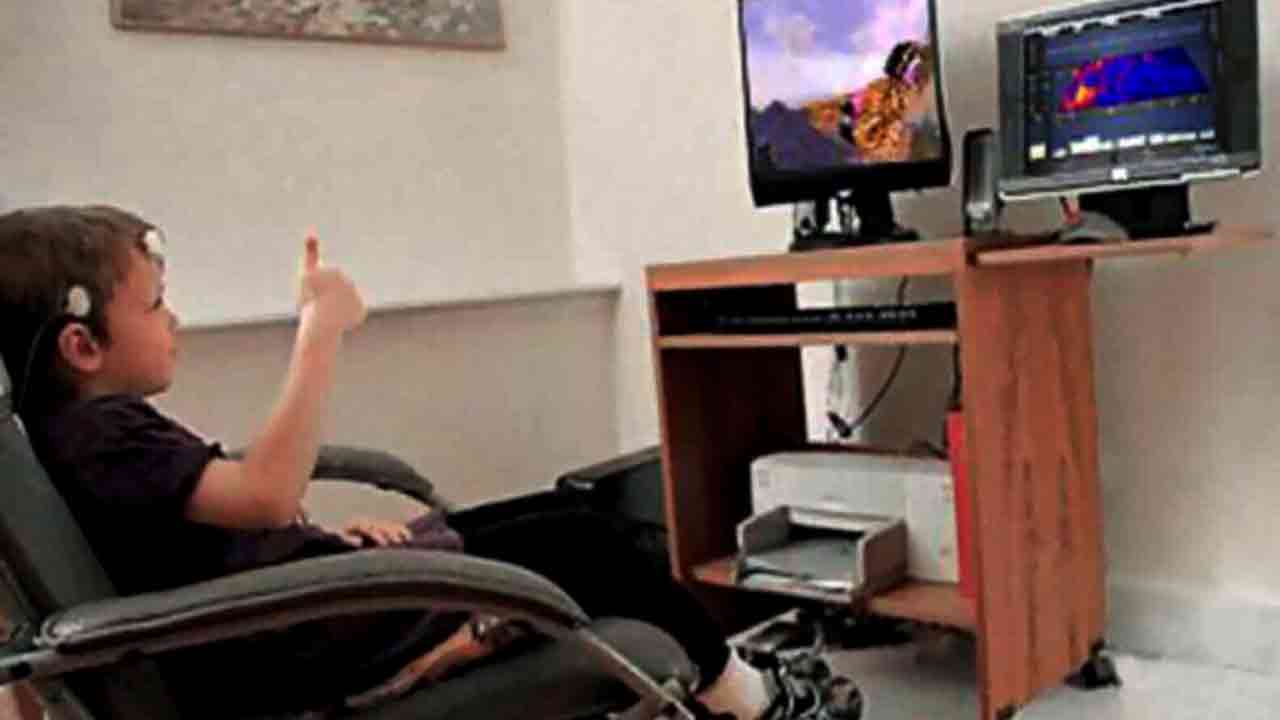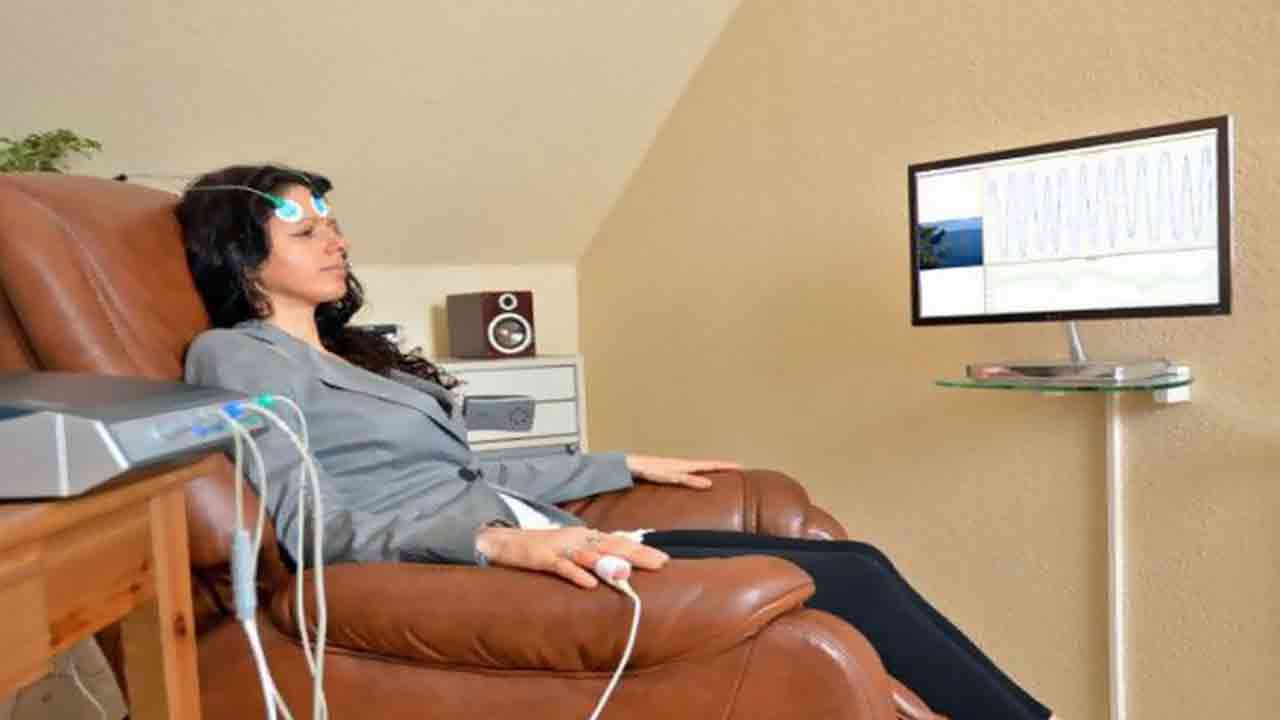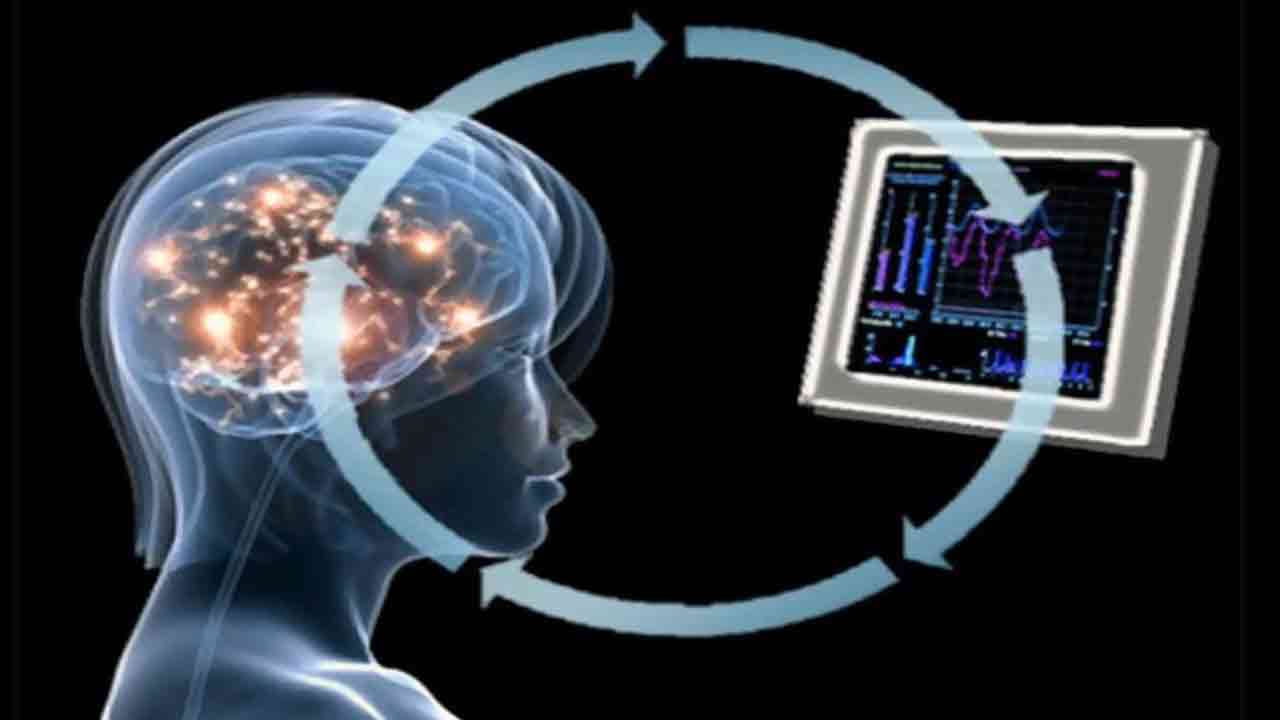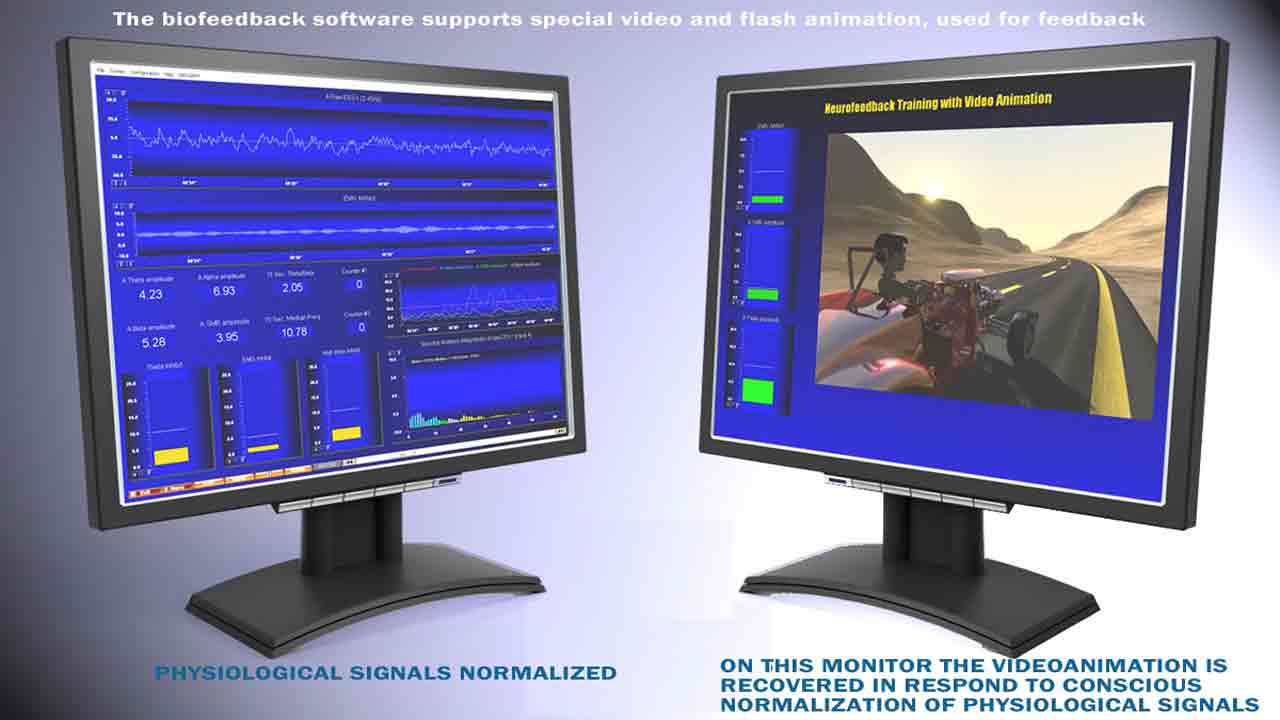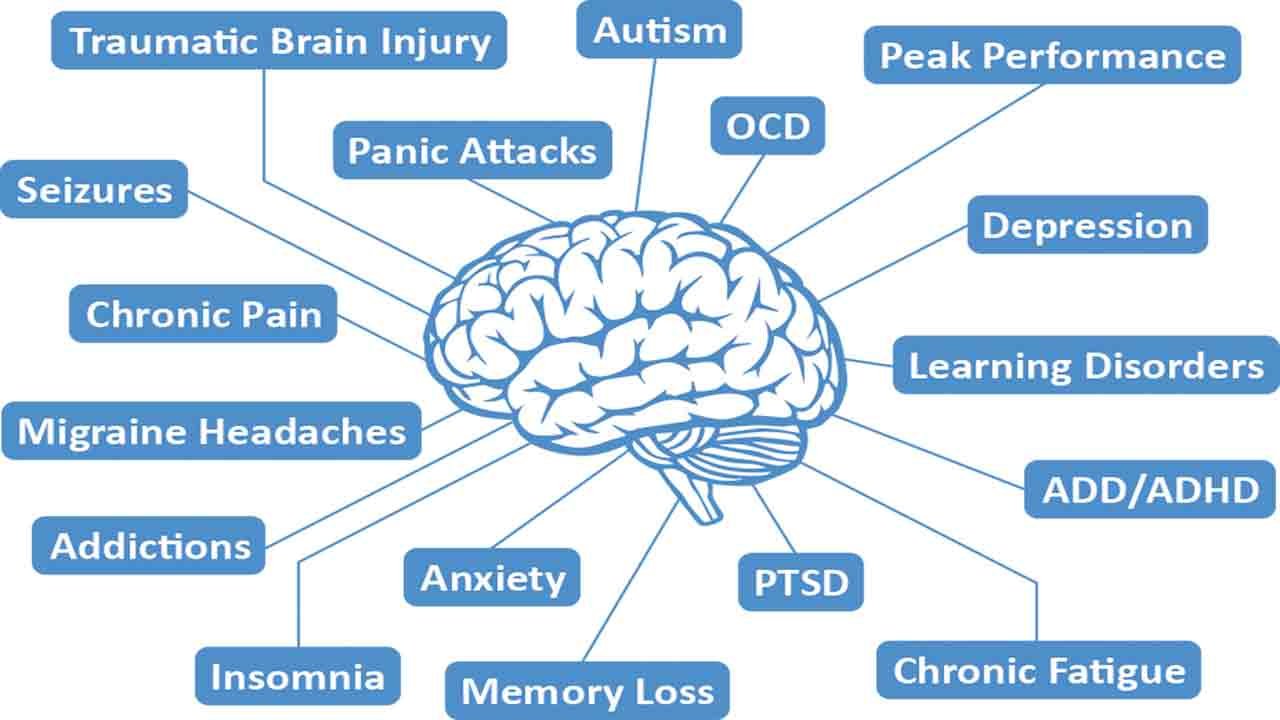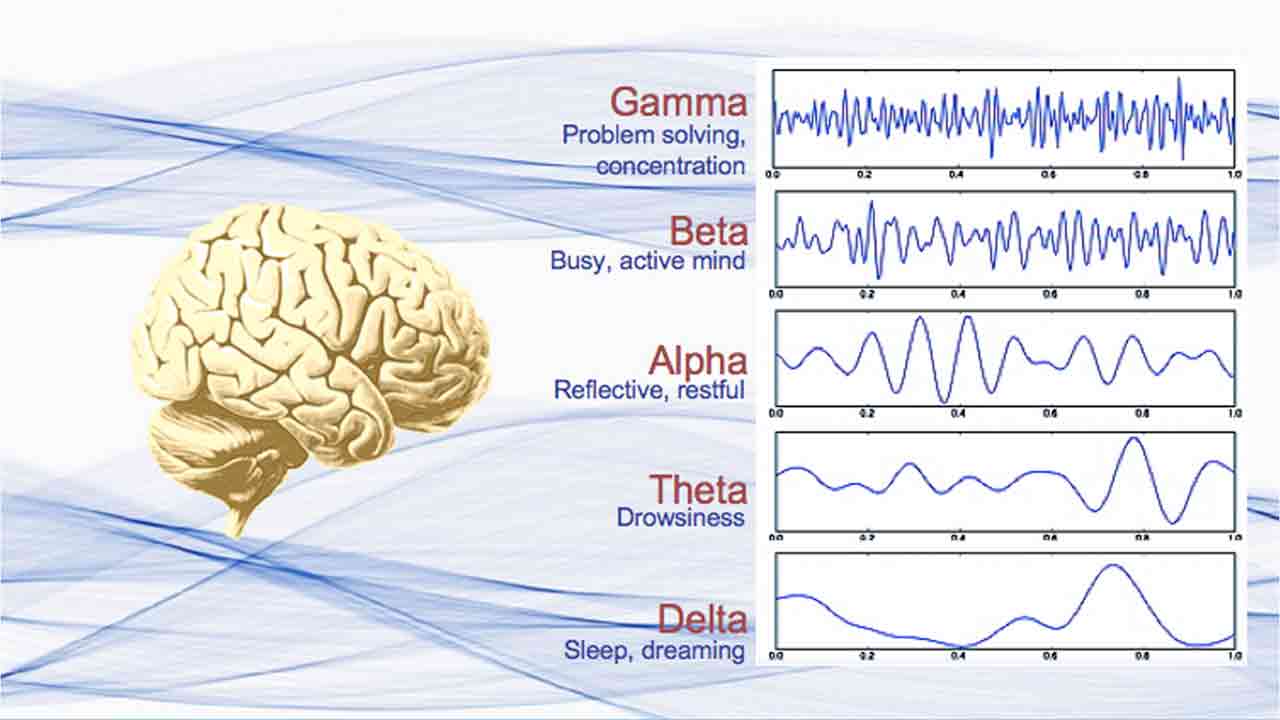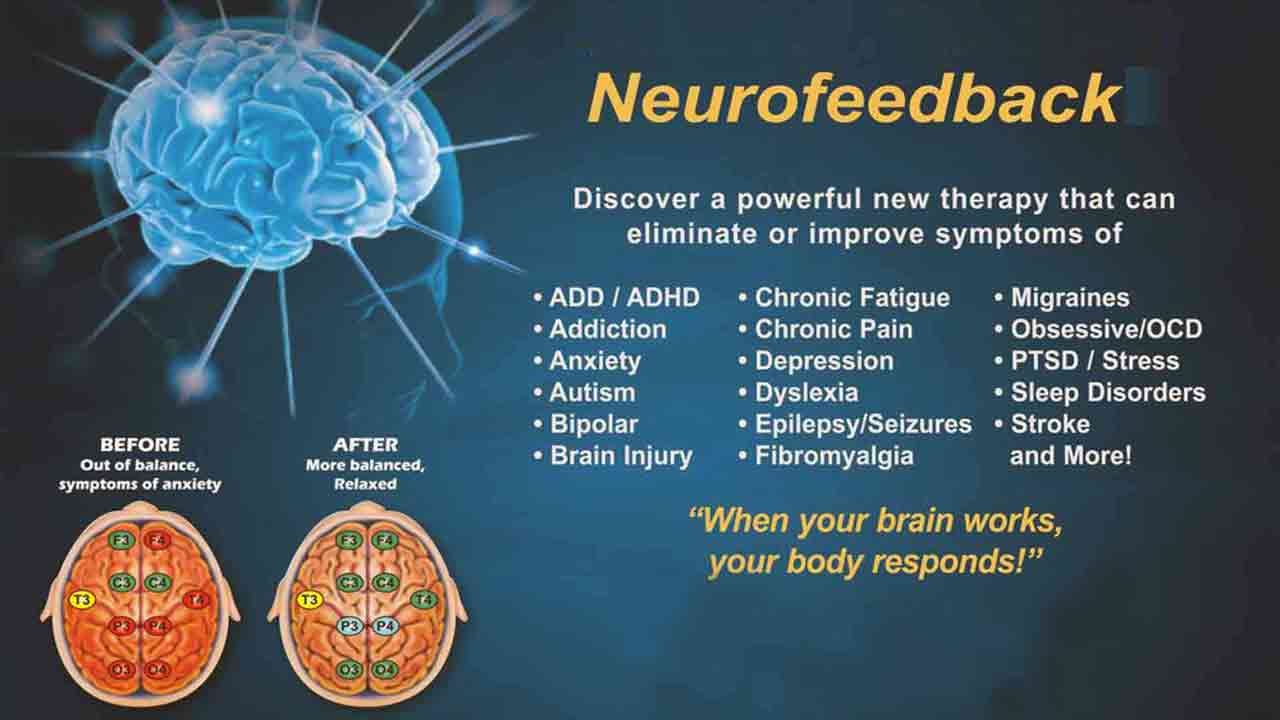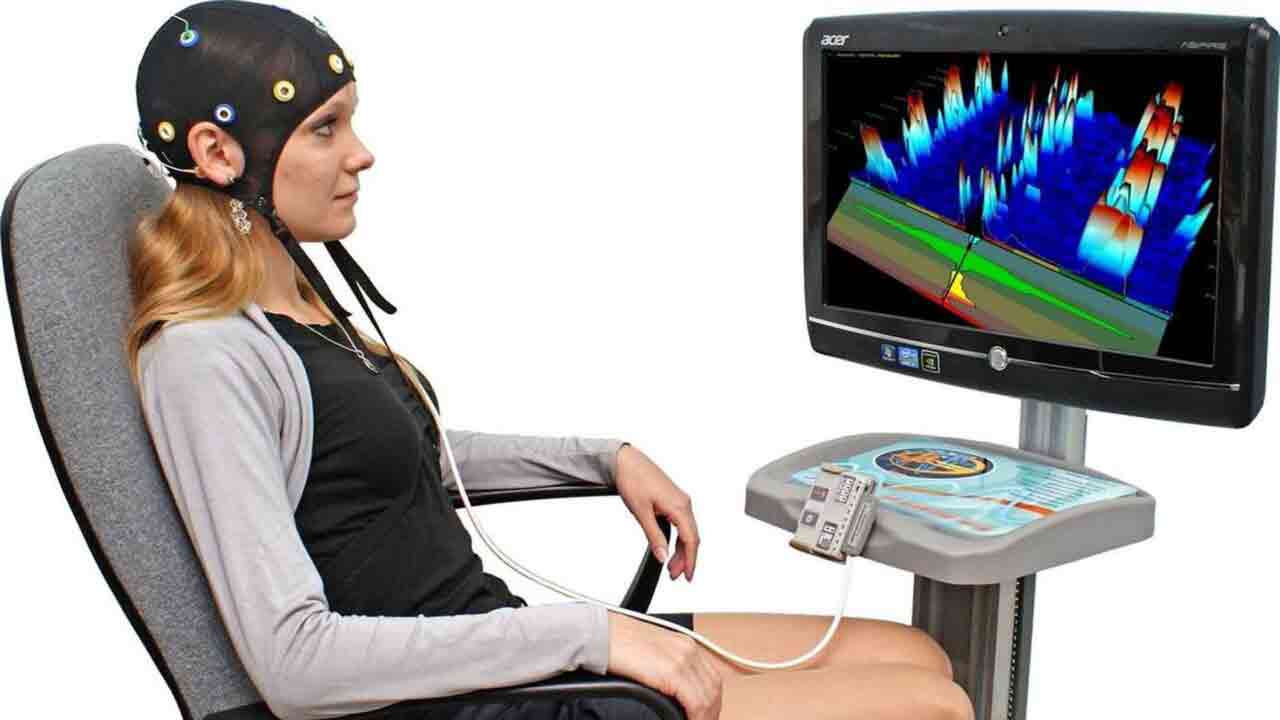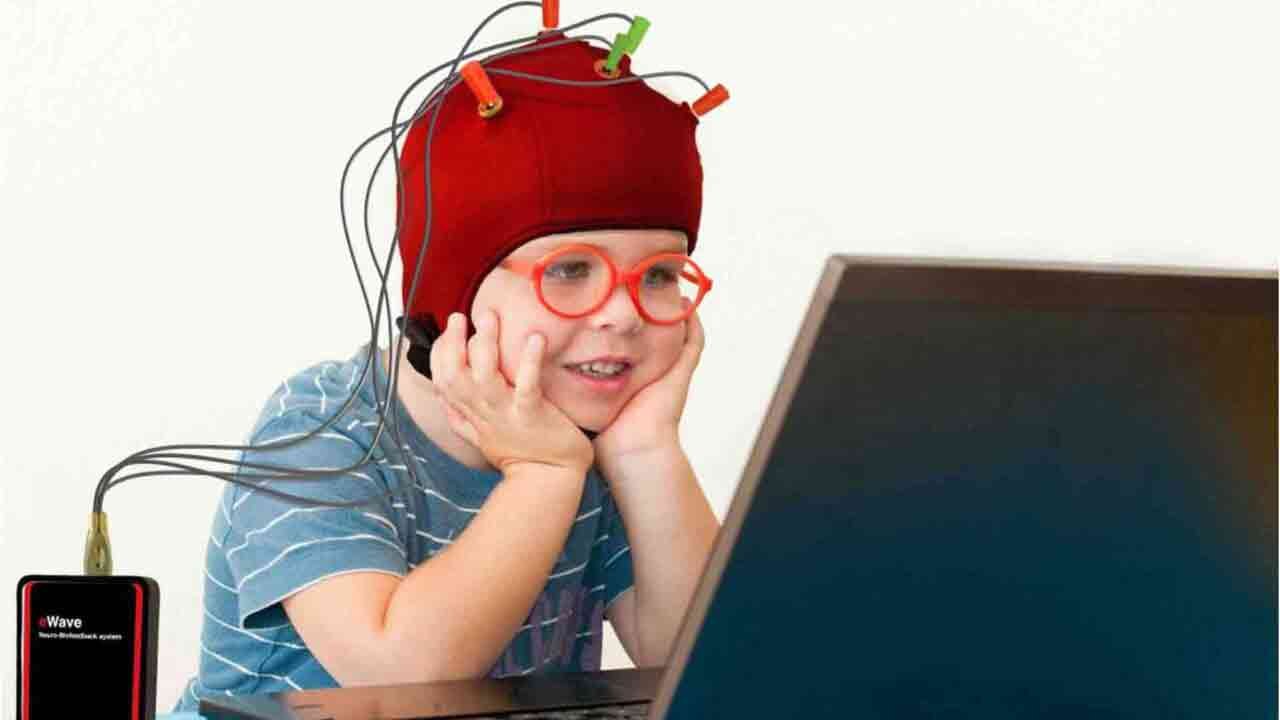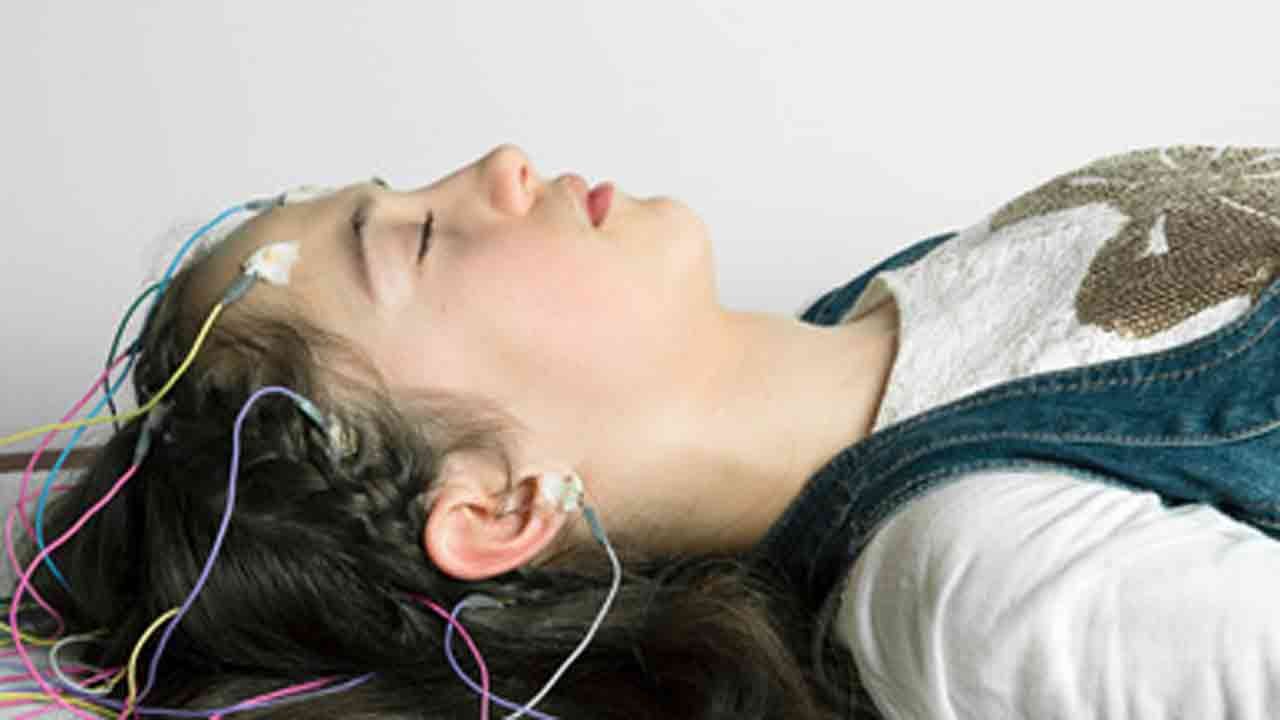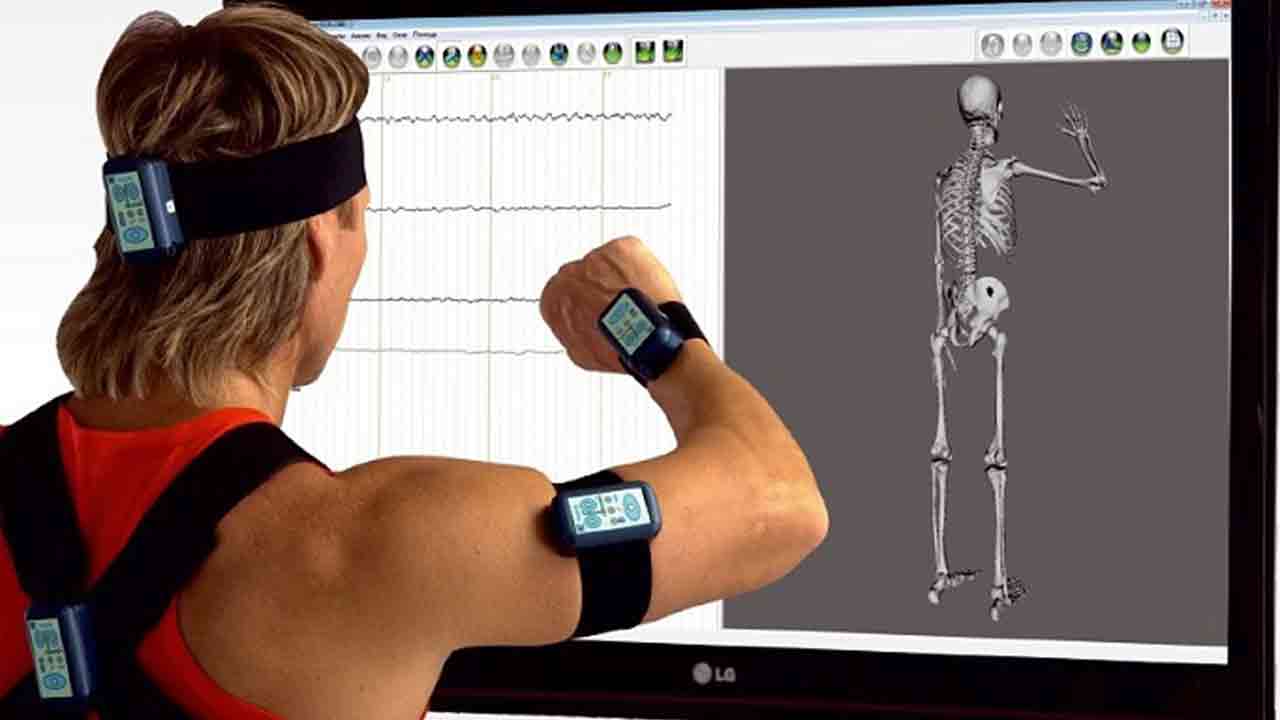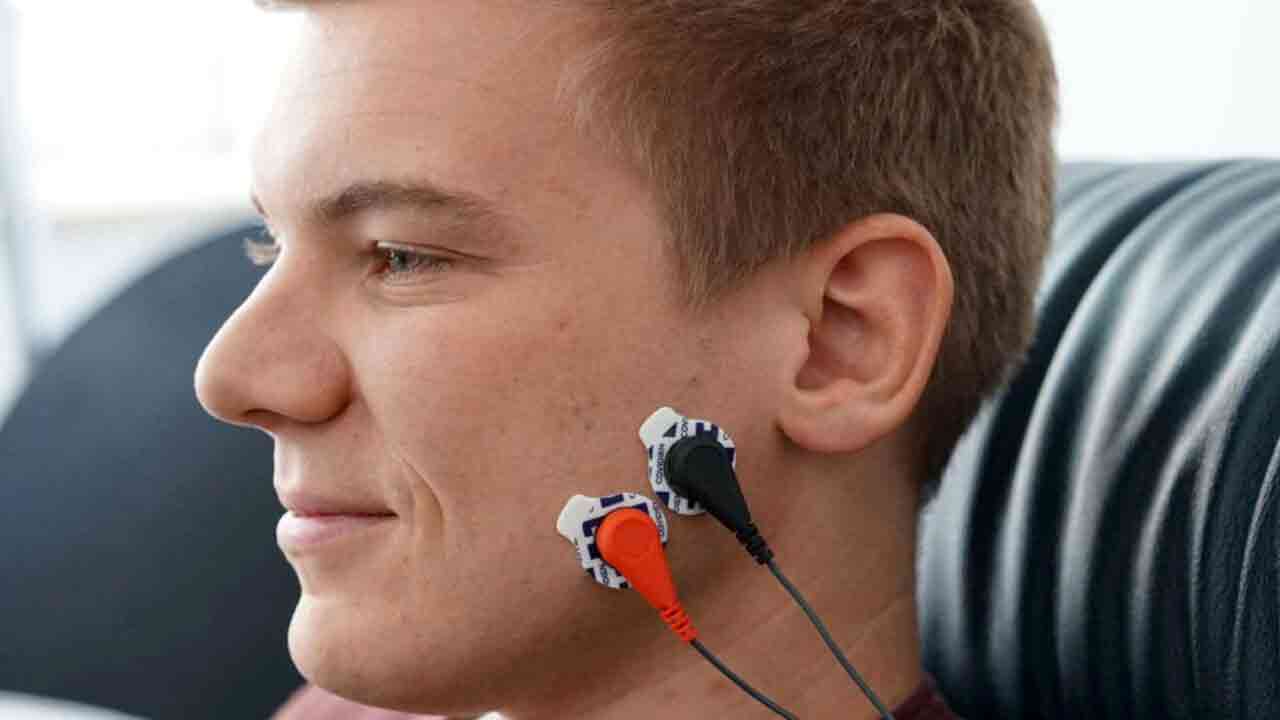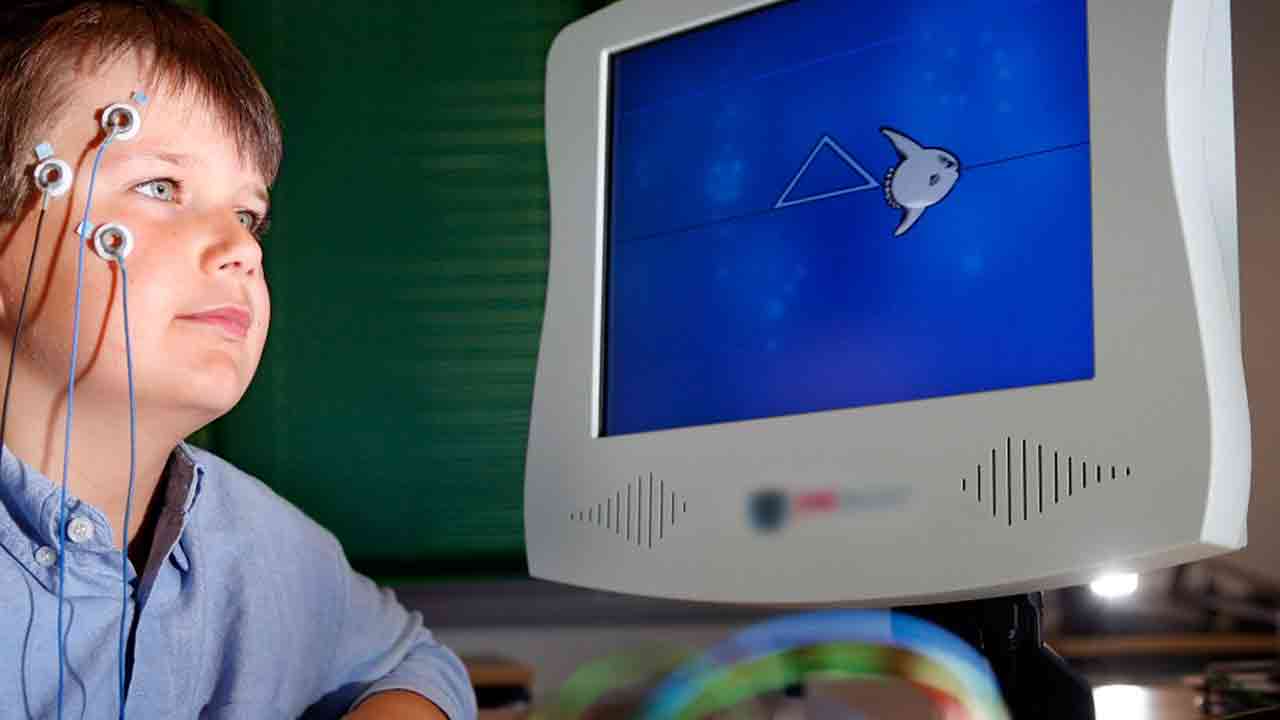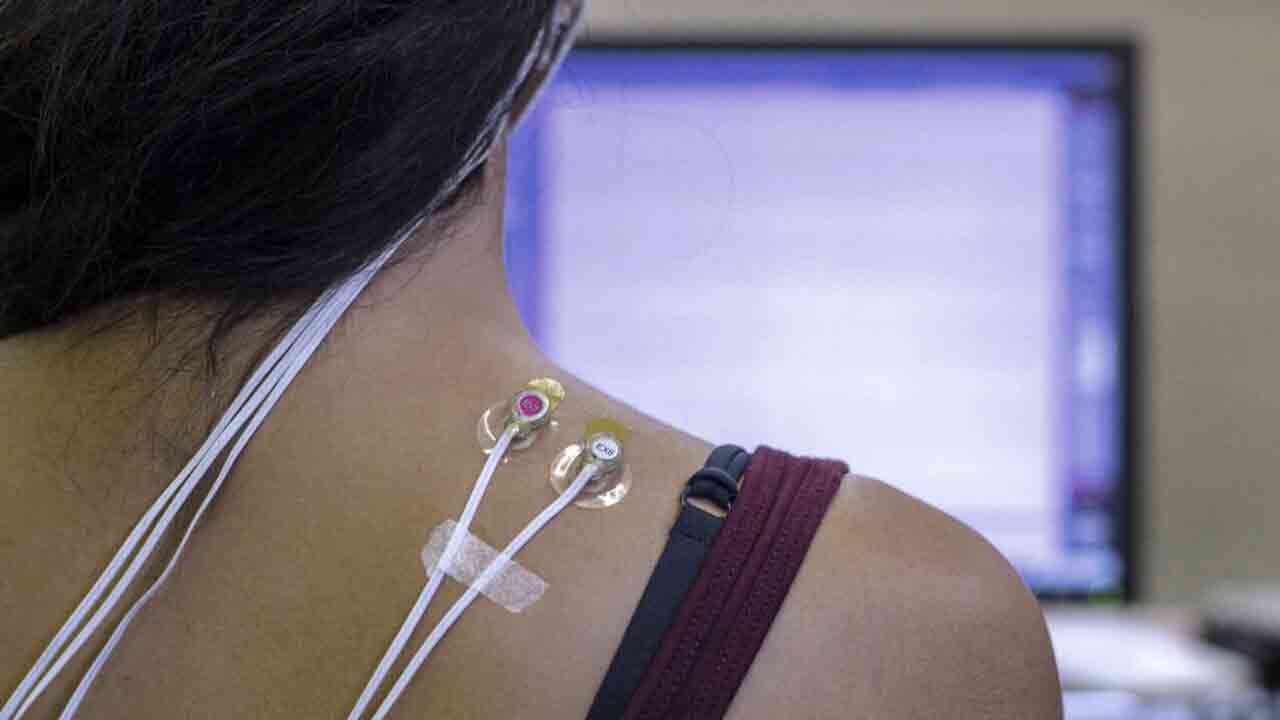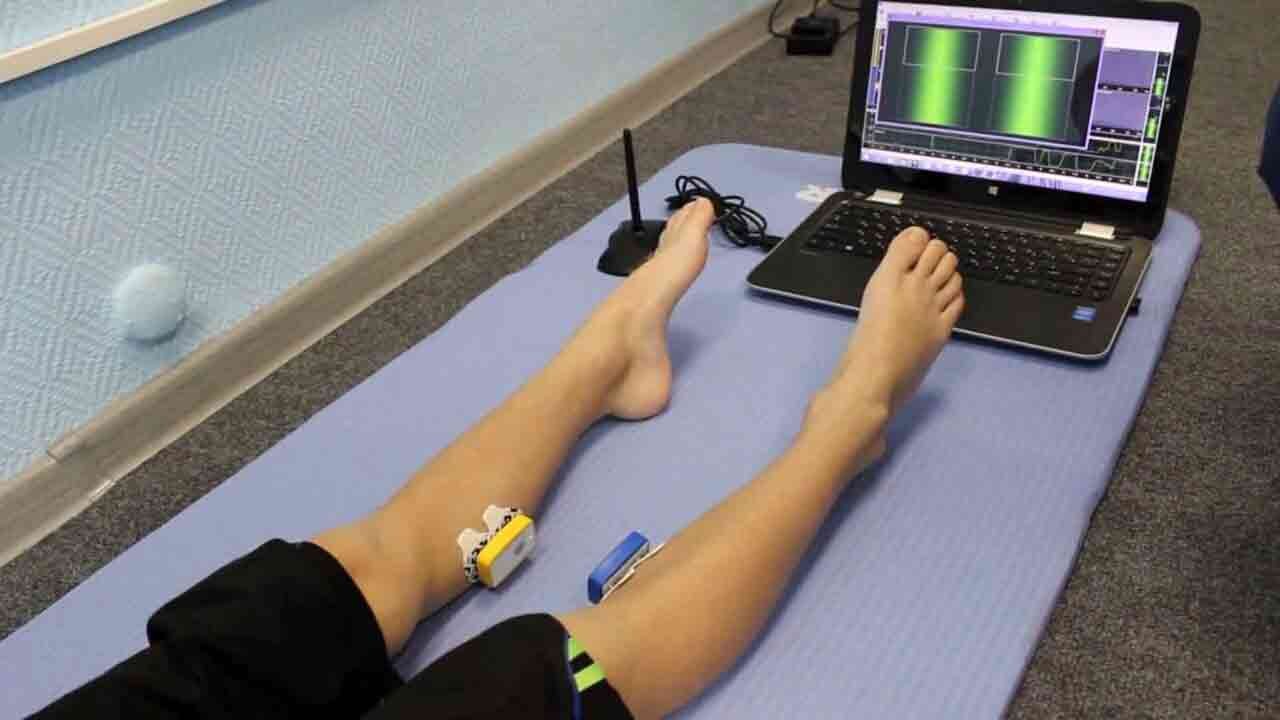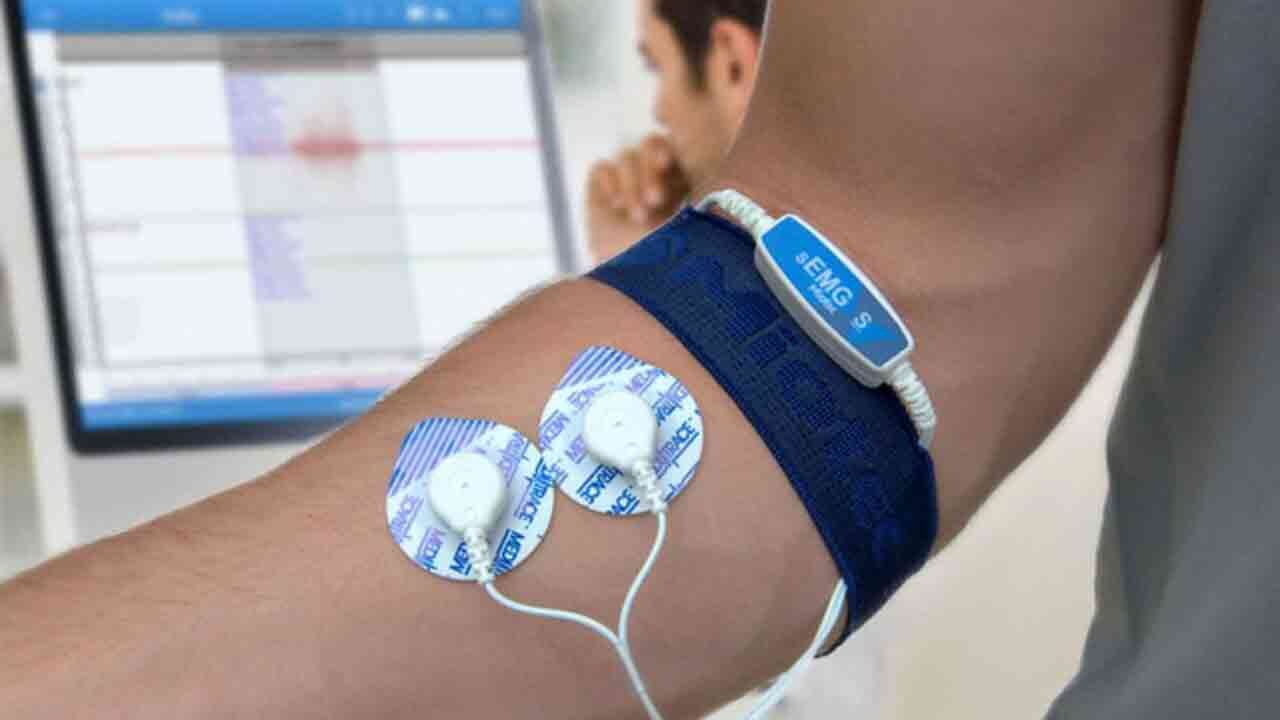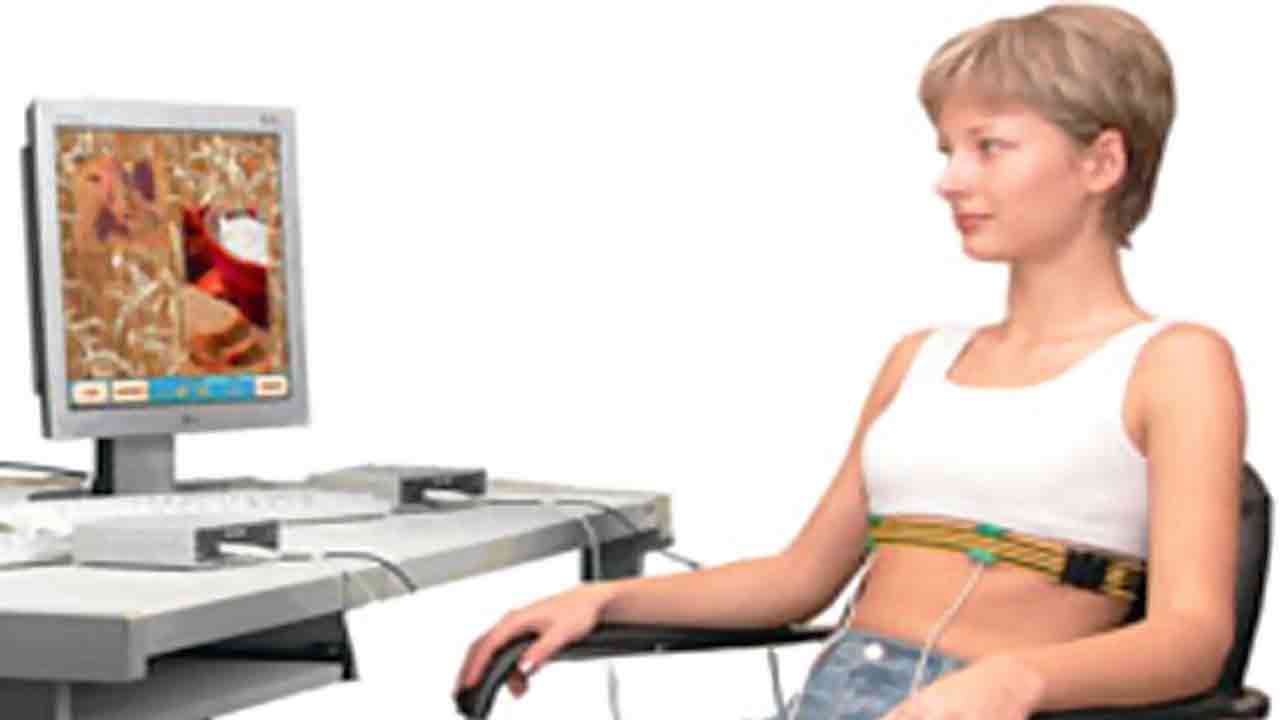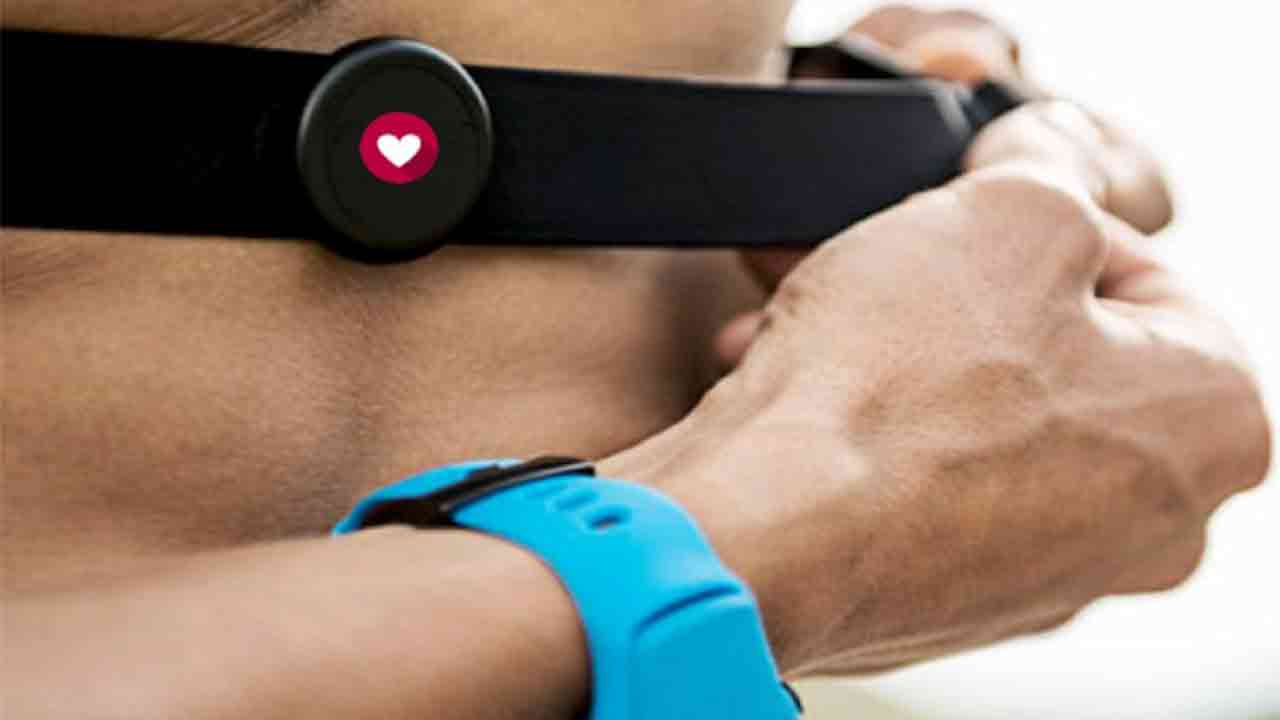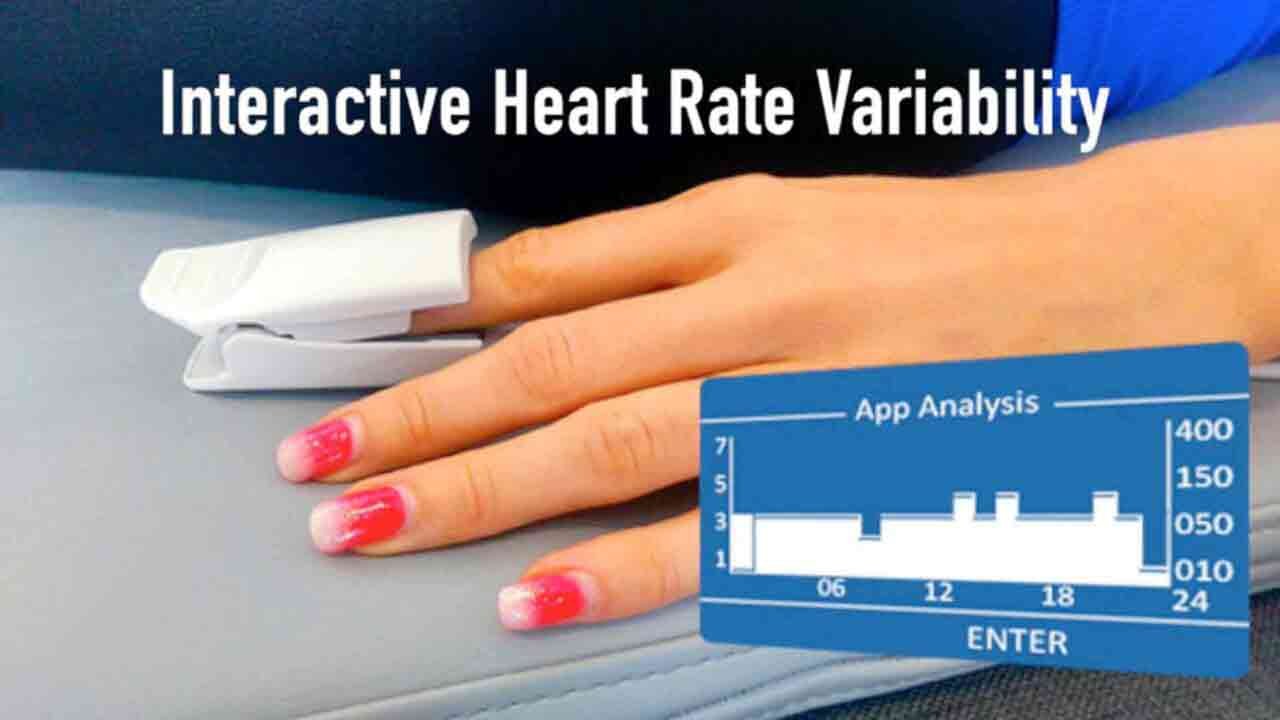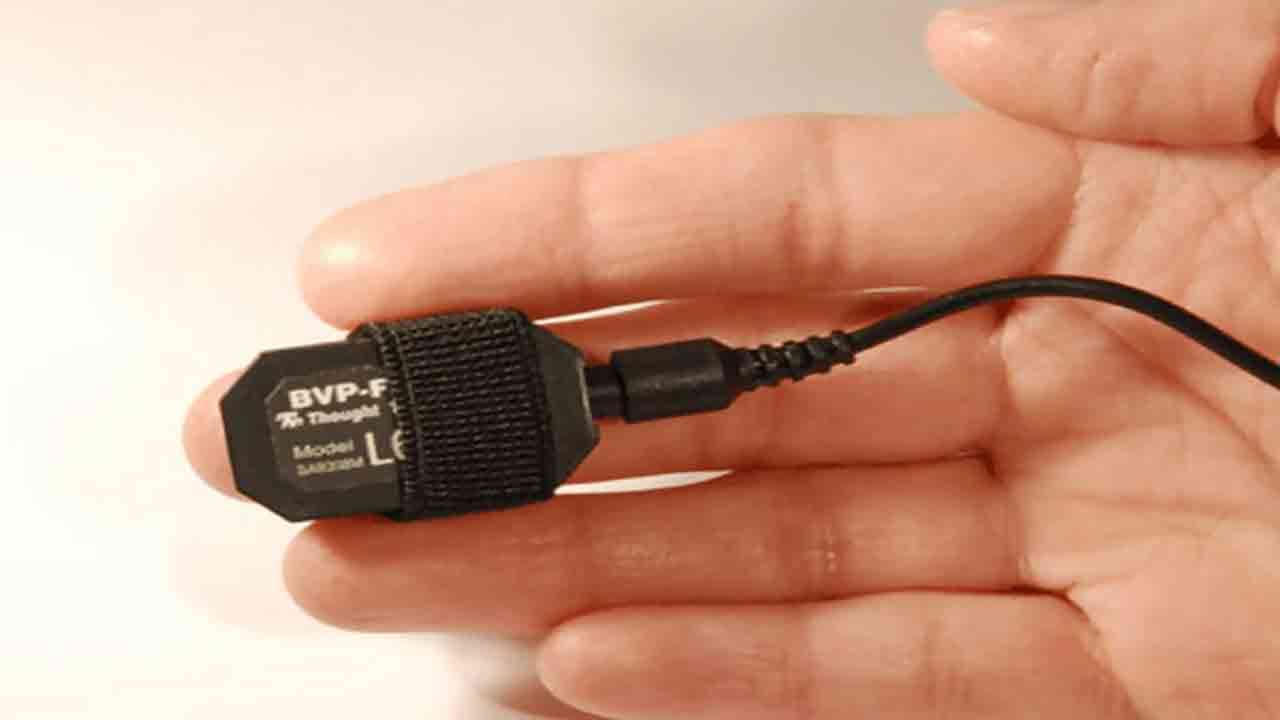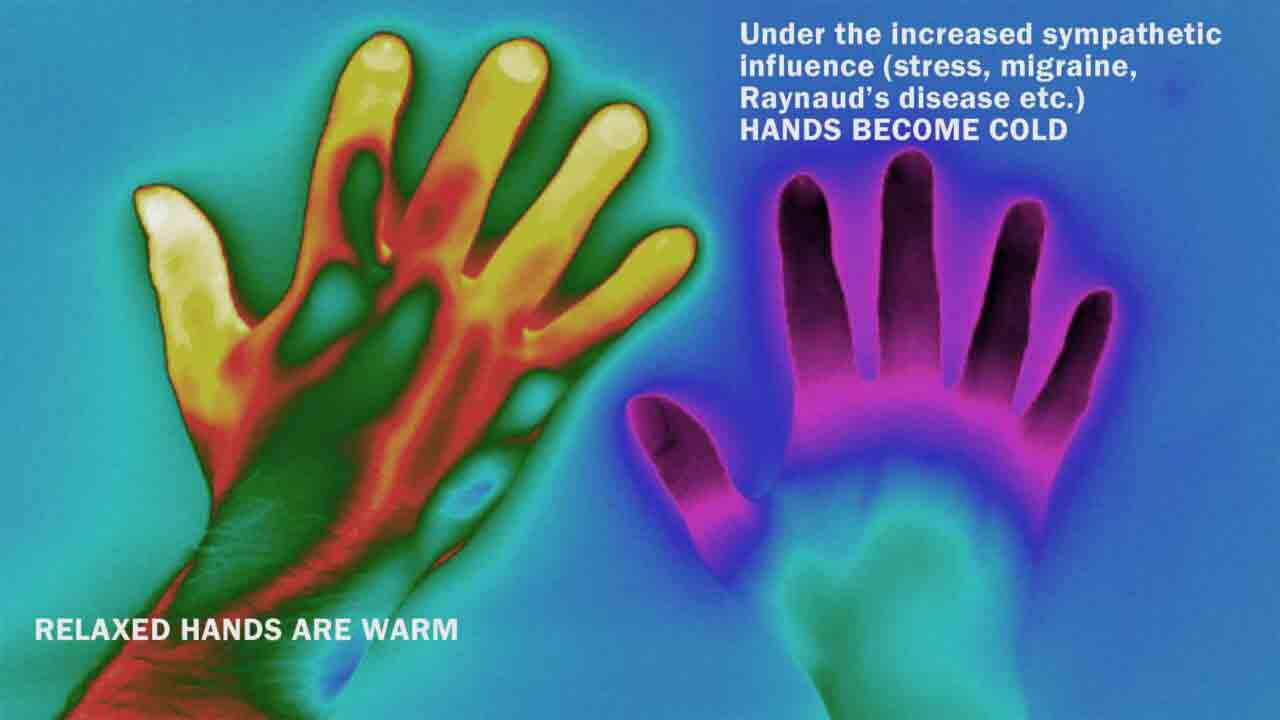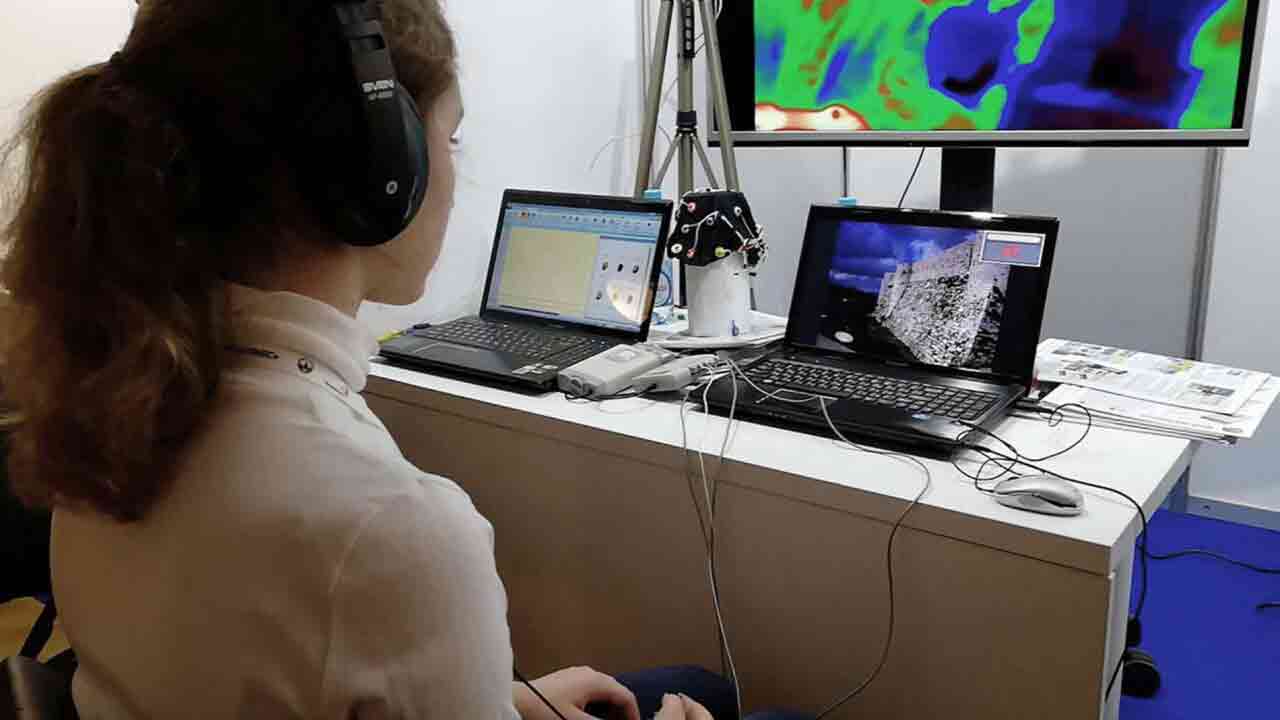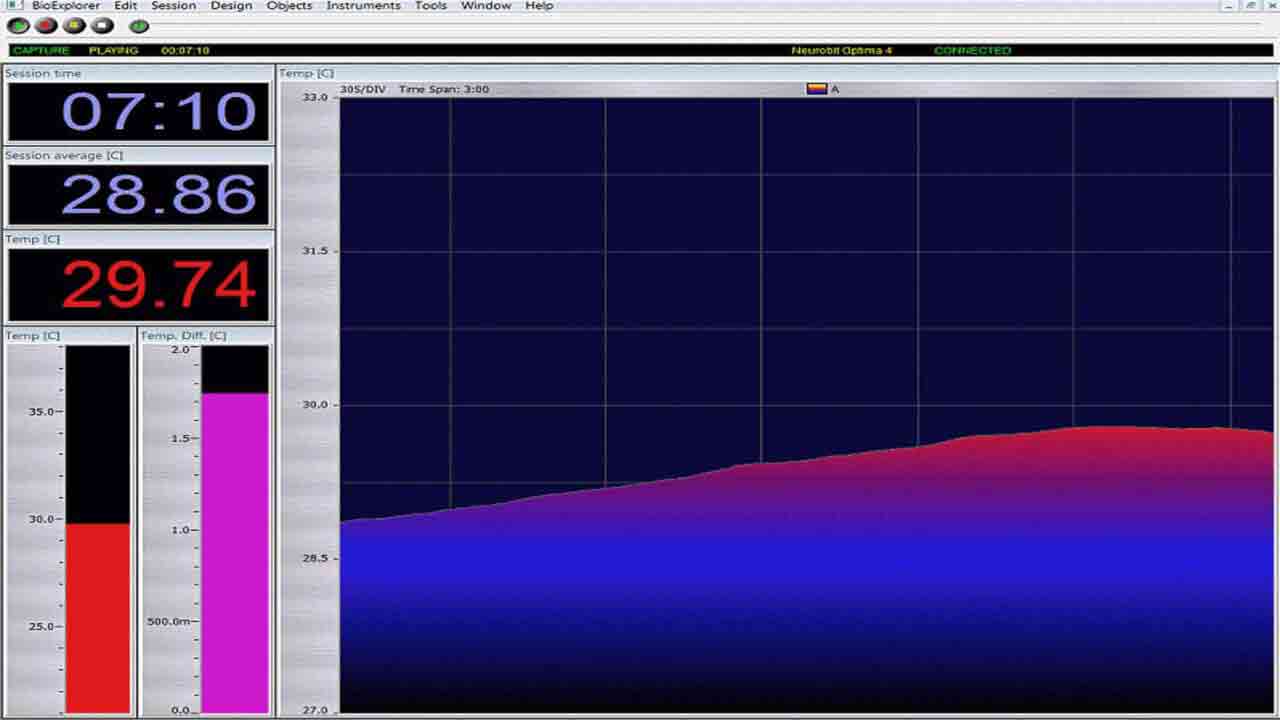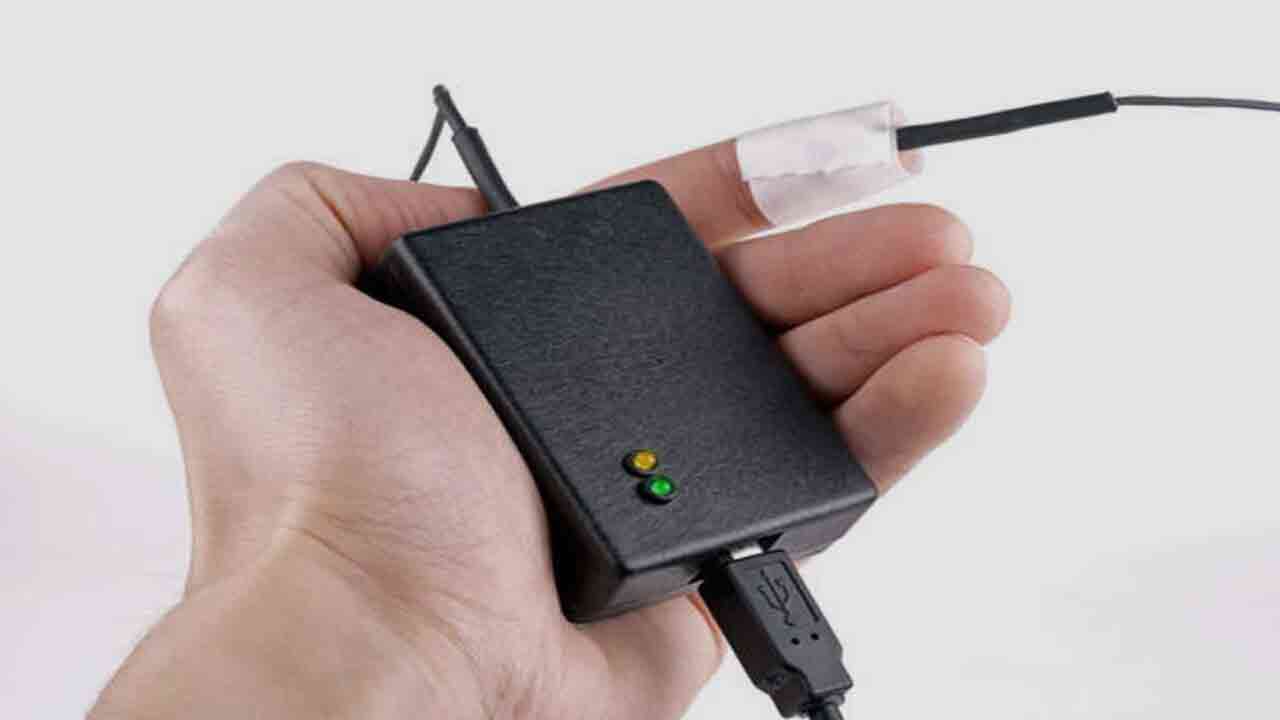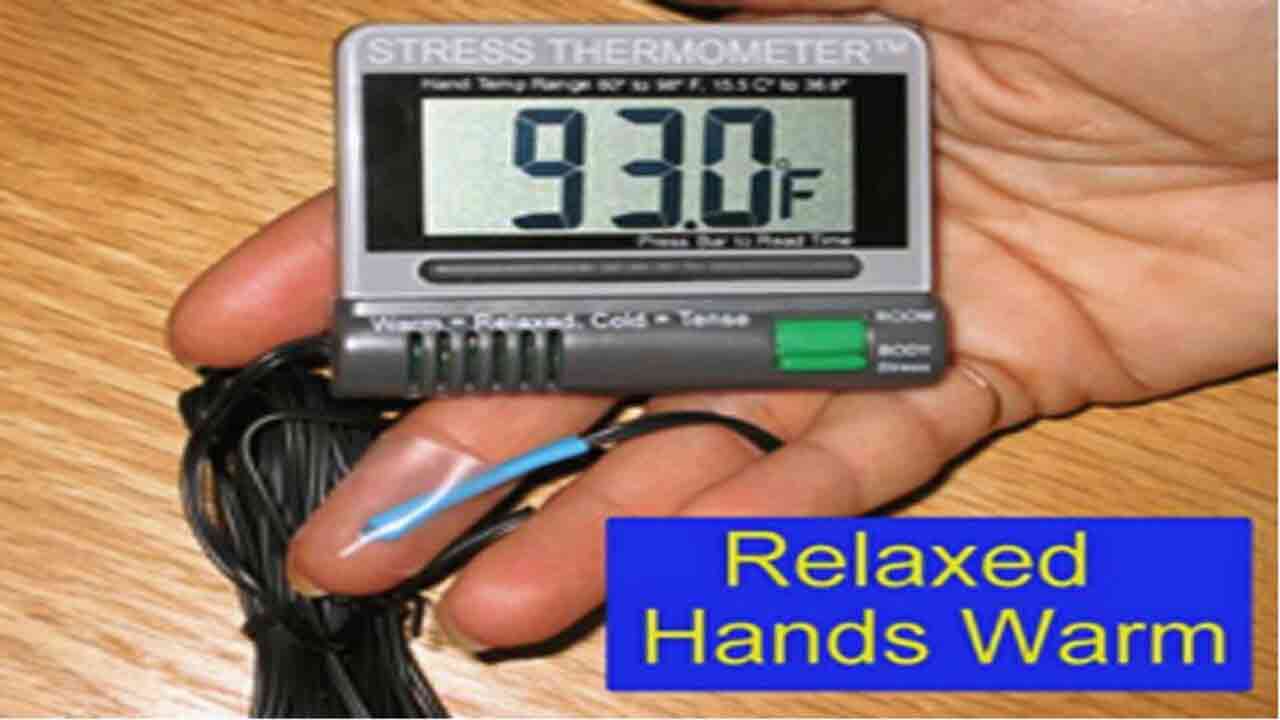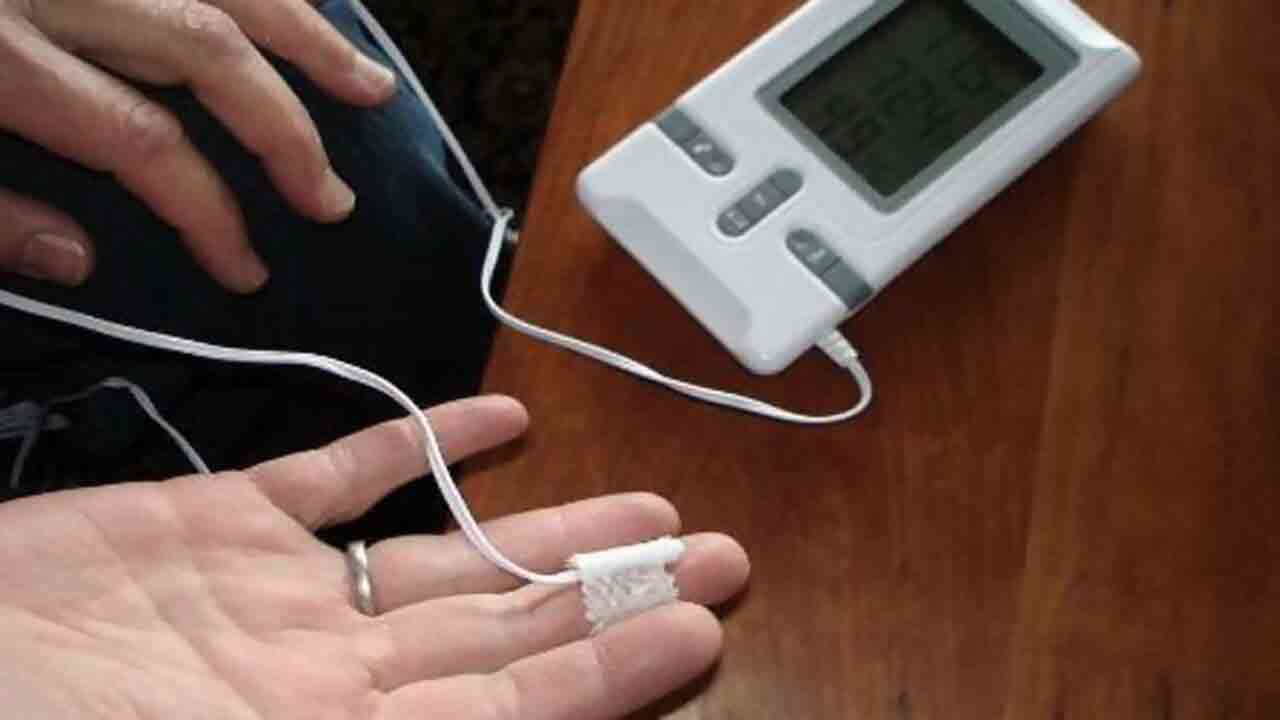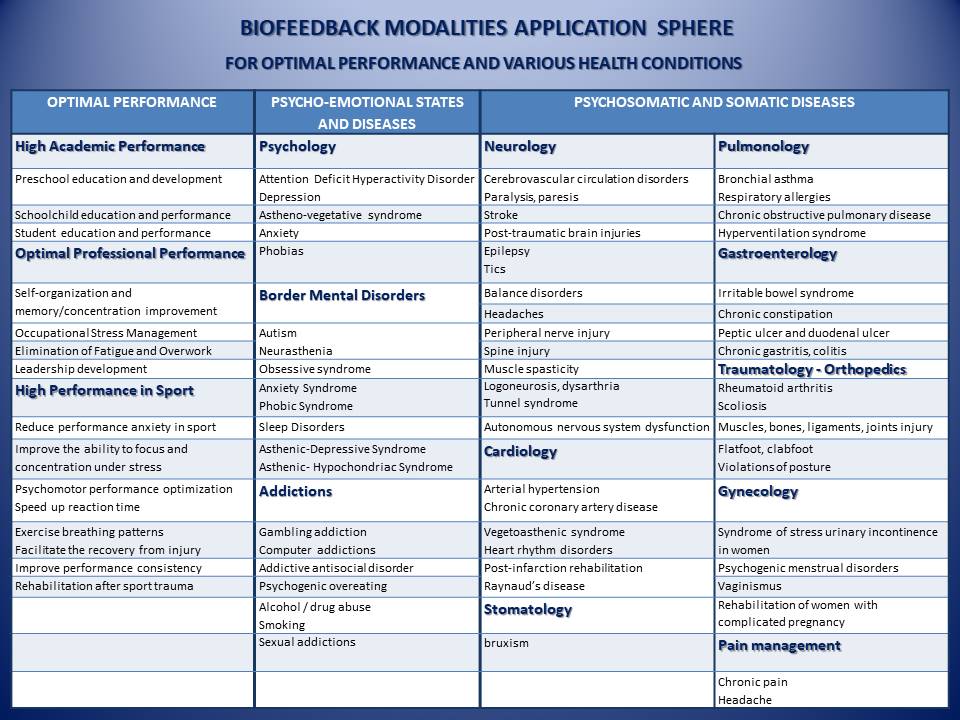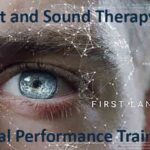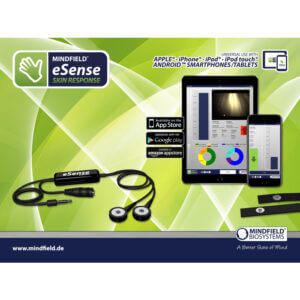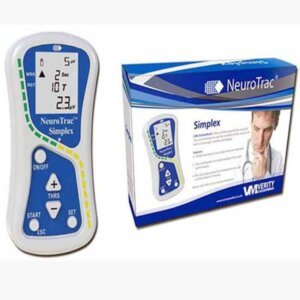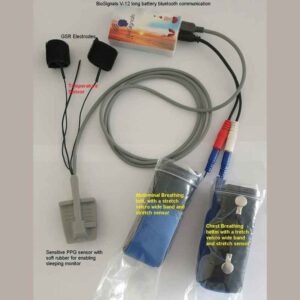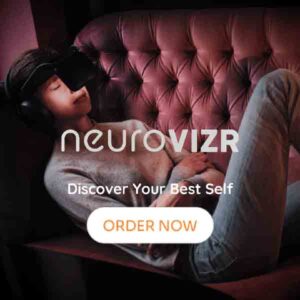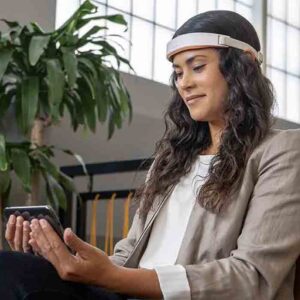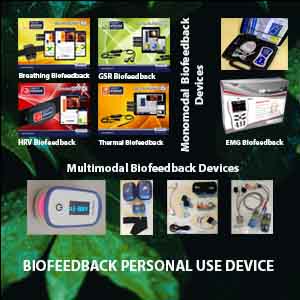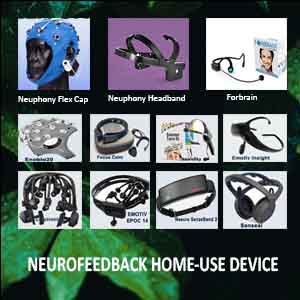BIOFEEDBACK NEUROFEEDBACK THERAPY AT HOME
Get rid of life-limiting conditions & health problems and achieve optimal performance!
WHAT IS BIOFEEDBACK NEUROFEEDBACK THERAPY TRAINING
Biofeedback Neurofeedback therapy is a noninvasive approach that empowers individuals to better control their conscious/unconscious bodily functions by providing real-time information about their physiological responses. Traditionally, people receive biofeedback therapy in clinical settings under the guidance of specialists. However, with technological advancements, it is now possible to experience the benefits of biofeedback therapy at home in the comfort of your living space. In this modern era, as self-care and well-being are increasingly prioritized, the availability of biofeedback therapy at home has become an invaluable tool for individuals seeking to enhance both their physical and mental health.
Consequently, more people are turning to this approach for its accessibility and effectiveness in improving overall well-being. By allowing individuals to monitor and regulate their bodily functions, this innovative approach empowers users to take control of their wellness. Through specialized biofeedback devices and software applications, people can engage in therapy conveniently from home, promoting relaxation, stress reduction, and overall health improvement.
The vision behind biofeedback therapy at home
The vision behind biofeedback therapy at home revolves around the idea that awareness of our body’s responses can help us actively influence those responses to change them positively. By using various sensors that measure physiological indicators such as heart rate, blood pressure, skin temperature, and muscle tension, individuals can gather real-time data about their body’s reactions to different stimuli. This information enables users to understand and modify their physiological responses through visual or auditory cues, improving their health and well-being.
The convenience and accessibility of biofeedback therapy at home offer numerous advantages. It allows individuals to personalize their therapy sessions, choosing the duration, frequency, and focus areas that suit specific needs. Moreover, it eliminates the need for frequent visits to a healthcare facility, making it a cost-effective and time-saving alternative.
You can apply biofeedback therapy at home to address various health conditions and achieve multiple wellness goals. For instance, it has shown promising results in managing stress, anxiety, chronic pain, and migraines. In addition, biofeedback can help regulate high blood pressure and even enhance athletic performance by improving focus and control over physiological functions. With regular practice, individuals can experience better overall health and well-being. Additionally, tracking progress over time offers valuable insights into the effectiveness of different techniques and interventions. This empowers individuals to make informed decisions about their well-being.
Whether you are looking to reduce stress, improve your mental focus, or enhance your overall health, the Biofeedback therapy at-home self-guided approach has the potential to unlock new levels of self-awareness and well-being.
Table of Contents
Toggle- BIOFEEDBACK NEUROFEEDBACK THERAPY AT HOME
- WHAT IS BIOFEEDBACK NEUROFEEDBACK THERAPY TRAINING
- HOW DOES BIOFEEDBACK NEUROFEEDBACK THERAPY TRAINING WORKS?
- TYPE OF BIOFEEDBACK THERAPY AT HOME
- BIOFEEDBACK NEUROFEEDBACK THERAPY TRAINING ADVANTAGES
- BIOFEEDBACK/NEUROFEEDBACK THERAPY/TRAINING APLICATION SPHERE
- FREQUENTLY ASKED QUESTIONS
- BIOFEEDBACK / NEUROFEEDBACK ARTICLES
- Neurofeedback autism management
- Neurofeedback for PTSD. How Does It Help
- HRV Training. How to improve performance
- BIOFEEDBACK / NEUROFEEDBACK HOME USE DEVICE
- Medical and Non-medical Embodiment of Biofeedback Neurofeedback
- Biofeedback Home-Use Devices
- eSense Skin Temperature Biofeedback device
- eSense Skin Response Biofeedback device
- eSense Respiration Biofeedback device
- HRV Biofeedback device – eSense Pulse
- NeuroTrac Simplex EMG Biofeedback
- NeuroTrac MyoPlus 2 Pro Touchscreen ETS & EMG Biofeedback Machine with Software
- The Breather Device
- BioSignals Biofeedback 5 sensors Device
- eSense Muscle EMG Biofeedback Machine
- Neurofeedback Home-Use Devices
Video - What are Biofeedback Neurofeedback?
In everyday life, we perform voluntary bodily actions, such as movements of the body, hands, and legs, which we consciously control. However, other body functions are out of our conscious control. They are breathing, heart rate, body temperature, blood pressure, pain perception, brain wave activity, and others. The parameters of these functions are changed unconsciously in response to our environment, like when we are nervous, excited, exercising, or have some diseases. They are regulated by the autonomous nervous system, involuntarily and unconsciously.
Longtime exposure to the factors that affect these functions (stress, chronic overloading, etc.) may bring to their changes and, consequently, to some pathological states or even diseases. These diseases fall under the category of “regulation diseases.” Meanwhile, modern pharmacological treatment methods for such conditions are not always justified. Furthermore, they are expensive and often require a long rehabilitation period. Consequently, alternative approaches like biofeedback therapy may offer a more efficient and cost-effective solution for managing these ailments. They also do not exclude the occurrence of complications and side effects. Undeniably, nowadays, innovative technology helps people get control over these involuntary functions. It is called Biofeedback and Neurofeedback therapy/training.
Biofeedback/Neurofeedback therapy/training at home is a mind-body technique that teaches individuals how to modify their physiological activity. Through this process, individuals learn to control and regulate the body’s involuntary responses, which can help treat various health conditions. Furthermore, this technique not only aids in disease prevention but also enhances overall well-being and promotes optimal performance. Moreover, integrating biofeedback into daily routines, individuals experience greater control over their mental and physical states.
HOW DOES BIOFEEDBACK NEUROFEEDBACK THERAPY TRAINING WORKS?
During a Biofeedback/ Neurofeedback therapy/training session, electrodes are attached to the skin in various body parts depending on the physiological parameters necessary to register. These electrodes/sensors receive and register the parameters of the body’s involuntary functions.
The sensors send these signals to a monitor, which then displays them to the client as a sound, flash of light, image, or video. For instance, these signals represent various physiological activities such as heart and breathing rate, blood pressure, skin temperature, brain waves, or muscle activity. Additionally, the loudness, clarity, or brightness of these signals indicates the activity level of the measuring function. As a result, clients receive real-time feedback that helps them adjust and regulate their bodily functions.
Feedback Loop and Progress in Biofeedback/Neurofeedback Therapy
When people are under stress or have a pathological state or disease, their functions change: their heart rate speeds up or down, muscles tighten or weaken, blood pressure rises, breathing quickens or brain waves change their patterns.
With the help of the Biofeedback/Neurofeedback technique, people can see these changed responses as they happen on the monitor in the form of sound and image signals. Then, they get immediate feedback action to try to normalize these signals. This feedback loop helps the client focus on making subtle changes in the body, such as relaxing specific muscles and reducing pain. After correcting the parameters, based on feedback information, the people again see the normalized parameters as signals and try to keep these signals on the achieved level. They may then try to remember what their thoughts and feelings were at the moment and deliberately maintain them to keep them as such.
The Biofeedback/Neurofeedback therapy session operates like a game, making learning to regulate physiological parameters engaging and effective. Typically, each session lasts between 30 to 60 minutes. After around ten sessions, most patients begin to experience noticeable benefits from the therapy, although certain conditions, such as hypertension or ADHD, may require 20 or more sessions for improvement. This gradual progress and the game-like setup keep patients motivated and focused throughout their training journey.
TYPE OF BIOFEEDBACK THERAPY AT HOME
Several biofeedback techniques gather information about an individual’s bodily responses. The one used may depend on the objectives of the individual’s health condition and is determined by a specialist. However, a combination of physiological parameters such as brain wave activity, heart rate variability, muscle tension, breathing, skin conductance or temperature, and others can be more effective.
Neurofeedback Therapy Training
Electroencephalographic biofeedback (EEG BFB) is a form of biofeedback in which surface electrodes are placed on the scalp to measure specific brain-wave frequencies and provide feedback to the individual. An EEG monitors the activity of brain waves linked to different mental states, such as wakefulness, relaxation, calmness, and sleep. This process is also known as Neurofeedback (NFB).
The neurofeedback (NFB) technique can be applied as both a relaxation method (alpha training) and a wakefulness technique (beta training). By targeting specific brain activity, skills can be developed to increase or decrease particular brain functions, such as amplitude, power, or coherence, depending on the condition or pathology being addressed.
In practice, EEG biofeedback is used to treat conditions like ADHD, alcoholism/substance abuse, epilepsy, headaches, and traumatic brain injuries. Additionally, it is often used to help individuals reach optimal performance. You can find more details about the Neurofeedback technique, its indications, and its effectiveness on our website’s “Therapeutic NFB” page.
Electromyographic Biofeedback Therapy at home
Electromyographic biofeedback (EMG BFB) uses sensors on the skin over skeletal muscles to monitor the electrical activity responsible for muscle contraction. Once these sensors detect the electrical signals from the muscles, they translate the data into a form that is easy to interpret, such as flashing lights, sounds, or video displays. As a result, individuals can use this real-time feedback to monitor and control their muscle activity better, which in turn helps improve muscle function and supports rehabilitation.
When muscles tense, the flashing activates; when relaxed – the flashing is stopped or gets slow. People learn to associate sensations from the muscles with actual tension levels and develop alternative healthy habits for keeping muscles only as tense as is necessary for as long as needed. Successful training completion enables people to repeat this response at will without being attached to any biofeedback equipment.
Video - Type of Biofeedback - Example of EMG Biofeedback
EMG Biofeedback is commonly used to diagnose and treat a range of neurological, neuromuscular, psychosomatic, and stress-related conditions. For instance, it is effective in addressing issues such as anxiety, asthma, cerebral palsy, fecal and urinary incontinence, headaches, and chronic migraines. Moreover, it is utilized for high blood pressure, low back pain, pelvic pain, and temporomandibular muscle and joint disorder (TMJD). Furthermore, EMG biofeedback proves highly beneficial in treating paralysis and muscle weakness caused by conditions like peripheral nerve injury, stroke, multiple sclerosis, Parkinson’s disease, and spinal cord injuries.
EMG Biofeedback therapy at home can also be highly beneficial for retraining injured muscles. In addition, it has been successfully used to enhance performance in education, sports, and business settings. For those interested in exploring more, detailed information about the EMG BFB technique, its indications for use, and its effectiveness can be found on our website’s “EMG Biofeedback” page.
Heart Rate Variability Biofeedback therapy at home
Heart rate variability biofeedback (HRV BFB) uses sensors placed on the chest, earlobe, and finger or wrist to measure the time interval between adjacent heartbeats. It was also labeled as respiratory sinus arrhythmia (RSA) biofeedback or resonance frequency feedback (RFF). The procedure undeniably consists of feeding back beat-by-beat heart rate data during slow breathing maneuvers such that the participant tries to maximize RSA, create a sine-wave-like curve of peaks and valleys, and match RSA to heart rate patterns. RSA is the heart pattern when the heart rate increases during air inhalation and decreases during exhalation.
Video - Type of Biofeedback. What is Heart Rate Variability?
HRV Biofeedback therapy at home brings the cardiovascular and physiological systems into harmony, which may positively affect conditions such as modern-day chronic stress, depression, and anxiety. This method of BFB is also used to treat asthma, high blood pressure, cardiac rehabilitation, preeclampsia, post-traumatic stress disorder (PTSD), fibromyalgia, chronic muscle pain, unexplained recurrent abdominal pain, insomnia, and others.
The Heart Rate Variability Biofeedback is also very effective for achieving optimal performance in education, sport, and business. You can find more details about the HRV BFB technique, indications for use, and effectiveness on our website’s “HRV Biofeedback” page.
Breathing Biofeedback therapy at home
Breathing biofeedback (respiratory BFB) uses sensors around the abdomen or chest to monitor breathing patterns and respiration rates. Through this process, biofeedback-assisted therapeutic (diaphragmatic) breathing teaches individuals to engage the diaphragm, promoting belly breathing instead of shallow chest breathing. As patients observe their breathing through visual feedback in real-time, they can gradually learn to breathe more slowly, deeply, and rhythmically using their abdominal muscles.
For example, this technique is highly relevant in stress-heavy environments, such as exam preparation or work deadlines, where mental clarity is essential. Over time, individuals experience enhanced relaxation with consistent practice, helping them manage stress more effectively. Like how a skilled duduk player masters their breathing for optimal sound, individuals practicing diaphragmatic breathing achieve control over their body’s natural responses, leading to better focus and overall well-being.




Diaphragmatic breathing differs significantly from the typical breathing pattern of most adults. The usual adult breathing pattern, which may accelerate slightly just because it is being measured, involves shallow thoracic movements with a respiration rate of 15-22 respirations per minute. There is also an absence of sinus arrhythmia.
Video - Type of Biofeedback - Breathing
In contrast, diaphragmatic breathing focuses on slow, rhythmic inhalations and exhalations, with the diaphragm moving downward during inhalation and upward during exhalation. Typically, the respiration rate ranges from 5 to 8 breaths per minute, linked to the return of normal respiratory sinus arrhythmia. While practicing diaphragmatic breathing, individuals are encouraged to relax and give their breathing “passive attention.”
This technique helps manage symptoms of various physical and psychological disorders. Specifically, diaphragmatic breathing reduces physiological tension and arousal, positively impacting every body system. In addition, respiratory biofeedback effectively treats asthma, chronic obstructive pulmonary disease (COPD), high blood pressure, hyperventilation, and anxiety and supports optimal performance.
Our website’s “Breathing Biofeedback” page provides more details about the technique, its indications for use, and its effectiveness.
Thermal biofeedback, also known as psychophysiological feedback, is a type of treatment that uses a person’s body temperature to assess that person’s physical state. Over time, a person can be trained to control their body temperature by monitoring real-time changes to their thermal state. As a result, they will have control over specific physical issues.
Thermal biofeedback works by attaching a temperature sensor, known as a thermistor, to a patient, typically on the fingers or feet. For instance, as the sensor monitors body temperature, the readout is displayed on a digital screen, allowing the client to observe minute-by-minute fluctuations. Through this real-time feedback, individuals can learn to consciously regulate their body temperature. As a result, this process can improve blood flow, reduce stress, and promote relaxation. With consistent practice, this training can lead to enhanced self-regulation of physiological responses, especially in stressful or anxious situations.
Video - Type of BFB - Thermal BFB - thermography
A person’s tenseness can be measured by a drop in temperature in their hands. During stress, the body diverts blood from the surface area to the muscles and organs, allowing us to better respond to a nearby threat. When our surface temperature is high, it typically means we are relaxed or sleepy.
This method of home biofeedback therapy can effectively counteract the effects of stress and tension in the body while also teaching you how to increase blood flow to various areas. Additionally, it is commonly used to treat conditions such as high blood pressure, Raynaud’s disease, swelling, and migraines. Moreover, it helps achieve optimal performance in areas like education, sports, and business. Our website’s “Thermal Biofeedback” page details the Thermal BFB technique, indications for use, and effectiveness.
Electrodermal Activity Biofeedback therapy at home
Electrodermal activity biofeedback uses sensors attached to the finger or hand/foot that monitor and then provide feedback on skin conductance data. Skin conductance is not under conscious control. Instead, it is modulated autonomously by sympathetic activity, which drives aspects of human behavior and cognitive and emotional states. Skin conductance, therefore, offers direct insights into autonomous emotional regulation.
The galvanic skin response (GSR), or electrodermal activity (EDA), refers to variations in sweat gland activity that indicate the intensity of emotional arousal. For example, when we experience fear, joy, or other emotionally charged situations, eccrine sweat gland activity increases in response to our heightened emotional state. As a result, the skin becomes more conductive, which can be measured using EDA sensors.
In fact, EDA biofeedback therapy, often used at home, helps individuals regulate emotional responses and manage conditions like anxiety disorders, chronic pain, hyperhidrosis, and stress. Users can learn techniques to reduce their physiological stress by monitoring these changes in real time. As a result, this process promotes greater emotional control and relaxation, helping individuals manage stress more effectively.
BIOFEEDBACK NEUROFEEDBACK THERAPY TRAINING ADVANTAGES
- Biofeedback and neurofeedback technology are non-invasive and straightforward to implement.
- These therapies are tailored to each individual’s needs, ensuring a personalized experience for everyone.
- The treatment process actively involves participants, fostering motivation through immediate feedback and visible progress after each session.
- Ultimately, this approach enhances awareness of the powerful connection between the body and the mind.
- BFB/NFB empowers people by giving them greater control over their symptoms, their overall health, and their optimal performance;
- This technique is possible to combine with other methods of treatment;
- It can help decrease, and in some cases, eliminate, the need for medication and other forms of treatment;
- BFB/NFB training can improve the effectiveness of psychotherapy by helping individuals become more aware of psychological/emotional issues (e.g., denial, fear, or resistance) that may be hindering their progress;
- It activates immunological defenses and adaptability of individuals;
- Biofeedback has no side effects nor absolute contraindications;
- Provides long-term effect;
- Over time, individuals can practice the techniques independently to continue managing symptoms or conditions.
BIOFEEDBACK/NEUROFEEDBACK THERAPY/TRAINING APLICATION SPHERE
Part 1: General Information
1. What are biofeedback and neurofeedback therapy?
Biofeedback and neurofeedback are non-invasive techniques that allow you to monitor and control physiological functions, such as heart rate, muscle tension, and brainwave activity. Biofeedback focuses on physical tasks like muscle control, while neurofeedback targets brain activity to help regulate mental processes. Both methods enhance performance, reduce stress, and improve overall well-being.
2. How do biofeedback and neurofeedback therapy work at home?
With the help of portable, easy-to-use devices, you can now perform biofeedback and neurofeedback therapy in the comfort of your home. Whether managing stress with an HRV biofeedback device or improving focus using a neurofeedback headband, these tools make self-regulation accessible and convenient.
3. What are the benefits of home-based biofeedback and neurofeedback therapy?
Convenience: There’s no need for frequent clinic visits, which helps save time and travel expenses.
Cost-effectiveness: Investing in your device can significantly reduce the long-term costs of therapy sessions.
Personalization: You can practice at your own pace and schedule, making it easier to tailor the therapy to meet your needs.
Continual Progress: Regular use of these devices promotes steady improvement and enhances self-awareness.
4. What conditions can biofeedback and neurofeedback help with?
Stress and Anxiety: These therapies teach individuals how to control their physical and emotional responses to stress.
ADHD: Neurofeedback is efficacious in improving focus and extending attention span.
Chronic Pain and Headaches: Biofeedback helps manage physical tension and relax muscles, which can reduce pain.
Sleep Disorders: These therapies improve sleep quality by regulating brainwave activity.
Peak Performance: Athletes, professionals, and artists utilize these techniques to enhance performance.
Part 2: Device Use and Safety
5. Are home-use biofeedback and neurofeedback devices easy to use?
Yes, modern biofeedback and neurofeedback devices are designed to be user-friendly. Most come with intuitive apps and clear instructions to guide you through the training process. Whether you’re new to the technology or have experience with therapy, these devices make it easy to get started.
6. How often should I use biofeedback or neurofeedback at home?
The frequency of use depends on your goals and your specific device. For general relaxation or stress management, 3–4 sessions per week may be sufficient. However, if you’re targeting a specific condition like ADHD or performance enhancement, you might need daily or more frequent sessions to see optimal results.
7. Which devices are recommended for home use?
We recommend the following biofeedback and neurofeedback devices for home use:
- Mendi Headband: For non-EEG neurofeedback to enhance focus, mental performance, and emotional regulation.
- Neuphony EEG Headbands: To monitor and improve brainwave activity.
- eSense HRV Biofeedback: Ideal for managing stress and improving heart rate variability.
- BioSignals Multimodal Biofeedback Device: A versatile tool for tracking physiological signals like muscle tension, skin conductance, and heart rate.
8. Can children use biofeedback and neurofeedback devices?
Absolutely, children can benefit from biofeedback and neurofeedback therapies, provided they are used under appropriate guidance. For instance, devices like the Mendi Headband and Forbrain are often employed to enhance focus, cognitive skills, and learning in children. It is essential to adhere to age recommendations and consult a specialist as needed to ensure safe and effective usage.
9. How long does it take to see results?
Results vary depending on individual needs, goals, and consistency of use. Some people notice improvements in stress management and focus within a few sessions, while others may need several weeks of regular training to experience more significant changes.
Mental Performance Training: NeuroVizr
Maintaining mental clarity, focus, and emotional balance is more important...
Mendi Headset for Peak Performance
Achieving peak mental performance is essential for success in today’s...
Neurofeedback autism management
Autism Spectrum Disorder (ASD) is a complex neurodevelopmental condition characterized...
BIOFEEDBACK / NEUROFEEDBACK HOME USE DEVICE
Biofeedback and neurofeedback devices can serve both medical and non-medical purposes, with a fine line separating the two. In non-medical contexts, neurofeedback is often used for personal enhancement and brain conditioning. It aims to improve relaxation, attention, focus, concentration, and self-awareness and can complement practices like meditation, counseling, and hypnosis or assist in achieving altered states of consciousness. Importantly, anyone can engage in this practice without professional supervision. However, it is advisable to consult a healthcare professional to guide individuals seeking relief from medical issues.
Neurofeedback systems are primarily designed to allow users to control a computer for recreational, educational, or entertainment purposes. As a result, they are not classified as medical instruments. In fact, you can find detailed information regarding the indications, methods, and descriptions of various neurofeedback devices for home use here. However, if the device is used for relaxation or to relieve symptoms of certain disorders, it is considered a medical device. Therefore, it is essential to consider the system’s intended purpose to determine whether it qualifies as medical or non-medical.
Hence, in the nonclinical embodiment, most of the same functions and capabilities are present in the context of an educational and recreational device. It is nonetheless true that the actual benefits may be essentially the same in both embodiments depending on how the user configures and applies the device. However, the labeling and claims are different. The same instrument is being provided in both cases but with different intents.
Medical and Non-medical Embodiment of Biofeedback Neurofeedback
The difference between the medical and non-medical embodiments of BFB/NFB devices lies primarily in the user’s claims, expectations, and applications.
For example, although Neurofeedback can be used to improve attention and concentration, and this can be considered as a personal improvement application, in cases of suspected or diagnosed Attention Deficit Hyperactivity Disorder (ADHD), the use of this procedure might be regarded as a medical procedure.
It may thus be argued that neurofeedback treatment is intended to reduce the symptoms of ADHD, especially when the removal from stimulants (Ritalin, etc.) is desired and that Neurofeedback is being used in a medical context. However, suppose a parent, teacher, or counselor uses Neurofeedback in a home or educational setting to educate a child on how to reach a state of relaxed attentiveness and improve academic success. In that case, the treatment may be considered education, not treatment.
Training Rules
Neurofeedback takes advantage of the brain’s ability to change itself through a process known as Neuroplasticity. It utilizes the same learning process when we acquire a new skill. The brain learns by forming connections between nerve cells and utilizing critical pathways that connect different locations in the brain.
The more frequently you utilize these pathways, the better the brain becomes at performing the associated task.
This type of learning involves responses being controlled by their consequences. Neurofeedback offers the perfect learning conditions. As a result, it facilitates awareness of when the brain produces healthier brainwave patterns, reinforces positive change, and provides multiple opportunities to practice during training sessions. Information regarding the effectiveness of Neurofeedback can be found on our website’s “Therapeutic NFB” page.
Today, many devices are manufactured for home use biofeedback/neurofeedback training using different physiological parameters of the body. Our website’s “Home Use Device” page provides more detailed information regarding indications and descriptions for home use BFB/NFB devices.

